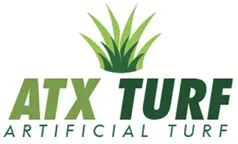 What does “Face Weight” mean in Artificial Turf?
What does “Face Weight” mean in Artificial Turf?
Published Aug 3, 2022
When shopping for artificial turf, or carpet in general, you will often see “Face Weight”, measured in ounces, on the product specification or sample package. While the other specifications, such as length, width, height and color are self-explanatory, “Face Weight” for most shoppers, needs further explanation. As artificial turf can often be a significant investment, depending on the size of your area, it is important to understand the “Face Weight” of the turf before making a final decision.
Specifically, “Face Weight” is the total weight of the yarn in the artificial turf added together in one square yard. Like carpet, artificial turf, has several parts, which are the fibers made to look like grass and one more kinds of backing, into which the fibers are tufted. Once these fibers are tufted into the backing using a 15 ft wide tufting machine, the material is then coated, most commonly, with a urethane backing to lock the fibers into place. Polyurethane is a resin applied to lock in the fibers during the coating process. Latex is also commonly used as backing material, urethane, however is more durable. The backing materials are NOT included in the “Face Weight.” The “Face Weight” plus the weight of the backing materials constitutes the “Total Weight.”
These materials themselves have variables which can effect their weight.
- Pile Height
The most obvious is the “pile height,” or actual length of the fibers. Shorter turfs may have a .5 inch pile height, while Athletic Field Turfs requiring infill, typically have a 2.25 to 2.50 pile height.
- Tuft Gauge
When you look at the back of a piece of synthetic turf, the stitches resemble “corn rows” running in one direction. Tufting machines are designed to “sew” the fibers into the backing in different widths, where the fibers may be 1/16 of inch apart from each other, or ½ of an inch apart. A 15 ft wide roll of turf with stitches ¼ of inch apart will be heavier, than a roll with stitches ½ an inch apart, all else being equal. Many infill systems for athletic field turf will have a wider “Tuft Gauge” as the rubber infill is designed to decrease the impact attenuation, rather than the fibers themselves.
- Stitch Rate
“Stitch Rate” indicates how far apart the individual stitches are in a row. One example is 13 stitches per 100mm. The closer the stitches are together typically requires more yarn, which in turn increases the weight of the material. The further the stitches are apart from each other, the lighter the material will be.
- Denier
Denier is also a product specification you might see for artificial turf or carpet, which is a variable in determining “Face Weight”. Denier indicates the density of an individual strand of yarn, often associated with the thickness, but not to be confused with the actual thickness of the yarn, as a thread can measure thinner in width but be denser, while a thicker blade can be less dense. The denier is defined as the mass in grams per 9,000 meters of fiber. The higher the denier, typically the more durable the yarn. A high end putting green turf, for example, may have a 7,500 Denier.
In conclusion, “Face Weight” has many parts that can affect the final ounce measurement. You may have a lower Denier, but higher stitch rate on some turfs, or you may have a lower pile height and smaller tuft gauge on other turfs. All of which can determine the overall density of the product and how durable it will be. Generally, the higher the Faceweight the better the turf.
Contact a Rep at ATXTurf today to discuss the Face Weight appropriate for your application. 866-428-2809

 What does “Face Weight” mean in Artificial Turf?
What does “Face Weight” mean in Artificial Turf?
0 Comments